Photo Essay: Spring on the Prairies
A look at what breeding waterfowl will find as they return to the Duck Factory
A look at what breeding waterfowl will find as they return to the Duck Factory
By Chris Jennings
Early waterfowl biologists called the Prairie Pothole Region of the United States and Canada the "Duck Factory" because of its incredible productivity for breeding waterfowl. Dotted with millions of small "pothole" wetlands, this region remains this continent's most important waterfowl breeding ground. In especially wetland-rich areas, duck breeding densities can exceed 100 pairs per square mile. Following is a visual tour of the prairies and why it's so important to conserve this region's wetlands and grasslands for waterfowl and other wildlife.
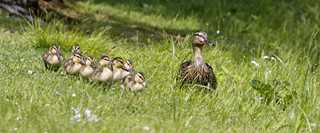
Photo Michael Furtman
Spring is a time of renewal on the prairies. Winter slowly releases its icy grip on the landscape and the first waterfowl pairs begin to return as snow melts and ice thaws. Returning ducks should find favorable wetland conditions across the pothole country this spring, thanks to a good frost seal and runoff from a solid snow pack.
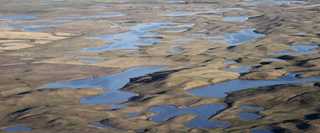
Photo Michael Furtman
Habitat conditions in the prairies vary based upon regional and local precipitation. This image shows a prairie landscape dotted with wetlands filled with snowmelt.

Photo Michael Furtman
The combination of abundant small wetlands surrounded by expanses of native grassland is what makes the PPR, the Duck Factory. These native grasses provide secure, attractive nesting cover for breeding ducks and other wildlife.
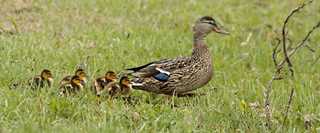
Photo Michael Furtman
Unfortunately, the native prairie is being lost at an alarming rate across the Duck Factory. In addition, many former Conservation Reserve Program lands in the Dakotas are returning to crop production. Ducks Unlimited is working closely with the agricultural community in both the United States and Canada to conserve prairie wetlands and grasslands on working farms and ranches.
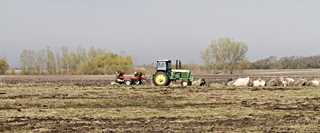
Photo Michael Furtman
Ducks Unlimited has worked with agricultural producers and businesses to expand the availability of winter wheat throughout the Prairies. This fall-seeded crop provides more secure upland cover for nesting ducks, especially compared to spring-planted crops, and gives farmers a way to diversify their cropping practices.
Waterfowl aren't the only wildlife that benefit from conserving native prairie. White-tailed deer utilize the cover provided by healthy wetlands as well.
Waterfowl use a variety of wetlands of different sizes, shapes, and depths during the breeding season.
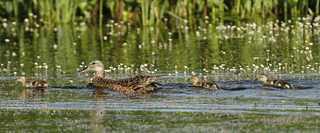
Photo Michael Furtman
Once out of the nest, ducklings feed heavily on protein-rich wetland invertebrates. Dense vegetation provides essential cover for ducklings as they grow to flight stage.
Of the top 10 most commonly harvested duck species, six of them achieve their highest nesting densities on the prairies. If you are an avid waterfowler, the prairies likely raise many of the birds you harvest during the duck season.
Hens often lead their ducklings long distances in search of ideal feeding areas. The loss of wetlands and grasslands not only limits breeding habitat availability, but also reduces the survival of hens and ducklings.
Every year, DU conducts a variety of research in different parts of the Duck Factory. This research helps DU learn more about how habitat changes affect waterfowl breeding populations.
For waterfowlers and other conservationists, the Duck Factory is a special place. The future of waterfowl populations and our waterfowl hunting heritage depends on the health of this region. Through grassroots fundraising, public policy work, and major sponsors, DU is focused on conserving this prime waterfowl habitat in the Duck Factory.
More PPR Information
Ducks Unlimited uses cookies to enhance your browsing experience, optimize site functionality, analyze traffic, and deliver personalized advertising through third parties. By continuing to use this site, you agree to our use of cookies. View Privacy Policy